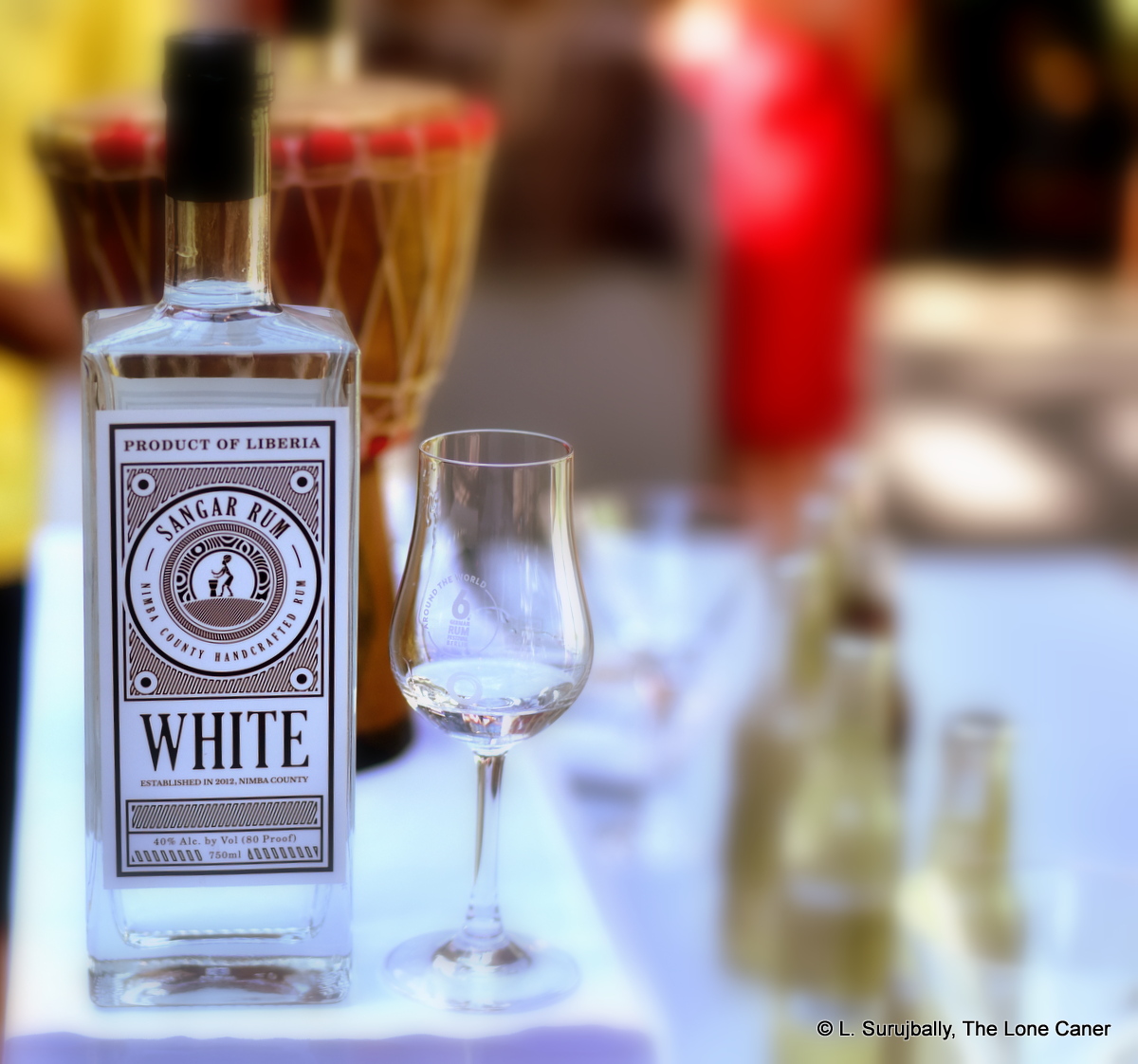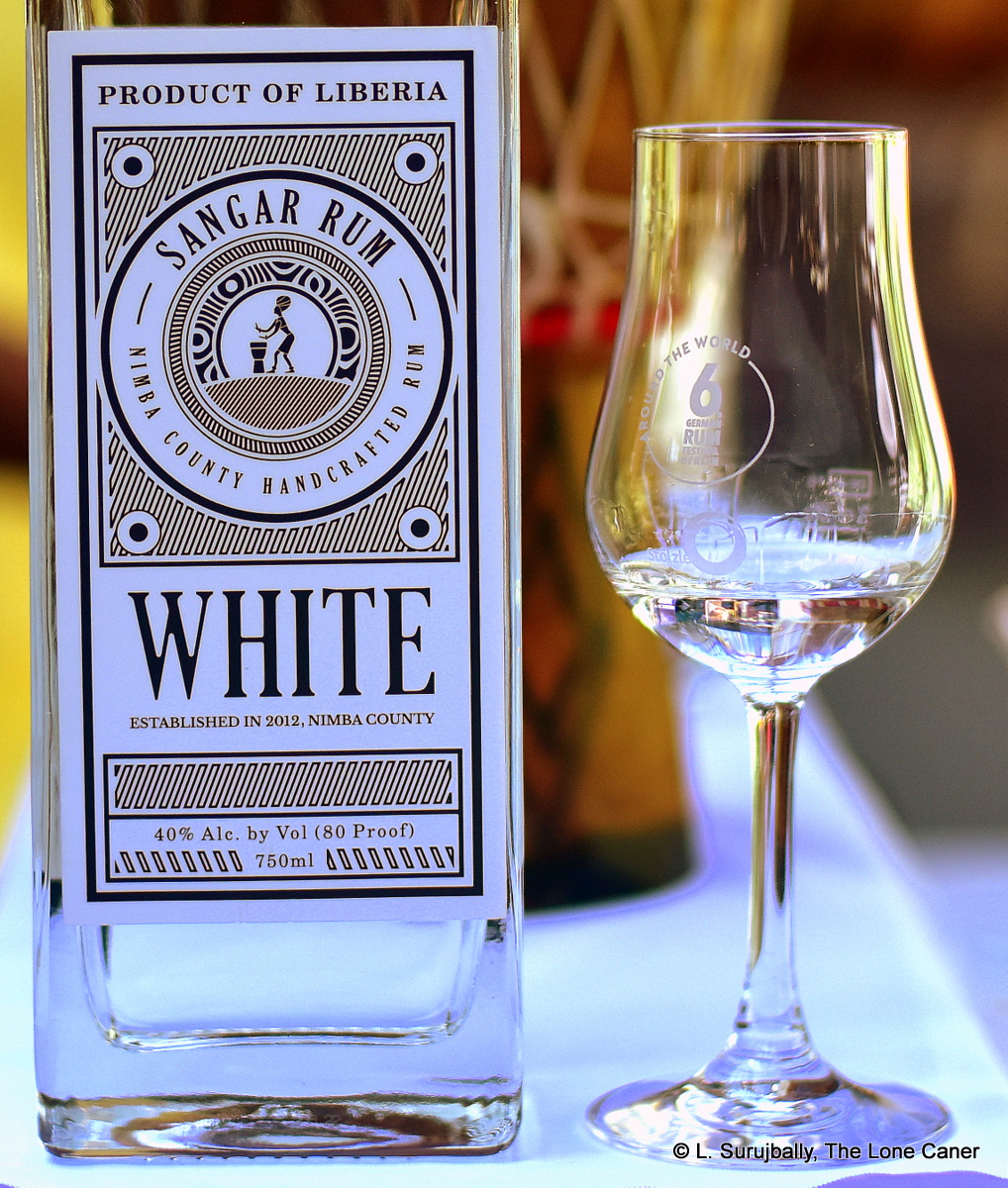
If you doubt the interconnectedness of the modern world, let me relate this circular story. About three or four years ago Gregers Nielsen (now of the Danish company 1423 and someone I enjoy heckling in every rumfest I see him at) introduced me to Richland Rum from Georgia, which I thought was nice, if perhaps not a world beating standout. Fast forward a couple of years and I’m doing research on rums of Africa and in looking at Liberia I come across Sangar rums, made by an expatriate American who was consulting with – Richland Rum. Another year passes, and at the 2019 Berlin rumfest the very first stand I’m told to go to is a new rum from Liberia – Sangar. And who told me this and pointed in their direction? Gregers…who then ended up working two booths over. I rest my case.
That amusing if irrelevant tale aside, here is some of the background of Sangar. My initial research a year or so back created some confusion – the application for equity investment called it Sehzue Distillers; the contact email at the time said Nimba Valley Rum and the official site referred to Miseh Distilling even though the website is for Sangar rum – but in all cases the principal force behind it is Mike Sehzue, an American West Point graduate with an MBA whose father was born in Liberia.
Mr. Sehzue had no idea how to make rum, but on a visit to Liberia in 2010, he became more aware of the local cane juice alcohol with its long grass-roots history and, realizing that expertise and raw materials were on hand, he decided to open a medium sized distillery both to encourage industry in a country now recovering from a protracted and bitter civil war, and to showcase the potential of locally made rum. A chance meeting led to an introduction (in 2014) to Erik and Karin Vonk of Richland Rum distinction and they provided him with the encouragement and technical advice which permitted him to open his distillery for business a few years later. The result is the only rum they make at the moment, the 40% Sangar White, sold primarily in Liberia, with the festival circuit raising awareness for export plans to the USA, EU and UK in later 2019 and 2020.
The rum is pot-still produced and derives from cane juice, not molasses. Sangar has no cane fields of its own, and contracts with seventeen or so local farmers in the surrounding area to source its cane, which is brought to the distillery and crushed within eight hours of cutting, with the juice put to ferment for five days. Then it’s run through their copper pot still, and bar filtration for sediment, is bottled pretty much as it is, unaged, clear, at a relatively demure 40% (which I suspect is so that it can more easily be appreciated by the target audience in the USA).

For the hardcore rum junkie, 40% would not normally excite serious interest (although the prospect of trying a new and relatively unknown African rum absolutely should), but trust me, the combination of a rum incorporating magic words like “pot still” and “unaged” and “clear” was and is well worth seeking out when it comes to the festival near you because the aromas and tastes are barely held in check even by those softer standards. The nose, for example announced its potential badassery with an initial tantara of salt, wax, gherkins in vinegar and just enough bite to make one wonder if a red chili wasn’t hiding in there someplace. Brine and olives were at the fore, followed by crisp green apples, lemon zest, cinnamon, and cumin.
Tastewise, I would have preferred something released at a higher proof, because the profile was mild instead of forceful, slightly muddled instead of really crisp — and while that will allow anyone to drink it neat without an issue, it also muted the flavours, almost losing some, that could have used a little beefing up. Clearly discernible were citrus, light fruit (papaya, white guavas, pears), sugar water, watermelons, sweet green peas (!!), and the rum retained just enough of the attitude to permit a good interaction with the brine and olives with the lighter components. Unsurprisingly the finish was short and wispy, mostly a mix of sweet and salt, soya, light fruits and a dash of cumin to close up the show.
So let’s sum up, then. The balance was excellent, the interplay of flavours spot on, and I was quietly impressed that so much could be packed into a package with so little aggro. Choosing my words carefully, I can say that this is a near perfect 40% white homunculus of a rumlet, and there will be an audience for it, no question – but it won’t be those who cut their teeth on agricole blancs north of 50%, for whom this will be an interesting diversion without replacing their pet loves. That said, there’s nothing at all wrong with it – it delivers at its proof point for those who appreciate that, and for those looking for an interestingly taste-filled mild white sipper, it delivers there as well.
Sangar points to several developing themes in today’s rumworld, which I‘ve almost inadvertently been following through my reviews and only become clearer in hindsight. First there’s the gradually increasing amount of micro-distilleries who aren’t seeking to make whisky or gin or vodka (or everything at once, as much as they can), but rum, full stop. Bar the United States, these micros are in remote areas of the world far from the Caribbean, like Africa and the Far East. And they seem to have a near-unnatural love for issuing unaged white rums at higher proofs, which is a subset of rums drawing more attention in recent years, especially in the cocktail circuit
With respect to that last remark, Sangar is something of an outlier, since the white reviewed here is bottled at standard. And the agricole blancs from the old and proud houses of the French West Indies are not in danger of losing their pride of place any time soon, not to the Far Eastern micros, or to Sangar. But as I noted above, with the interconnectedness of the world and transmigration of skills to any place with enough desire and smarts to make a good rum, it’s possibly just a matter of time before Sangar becomes a rum producer who really does earn the use of both the words “artisanal” and “craft” … without turning the words into the meaningless marketing twaddle that afflicts so many others.
(#659)(82/100)
Other notes
Sangar has small quantities of rum ageing away in port casks in Liberia: it’s unknown when these will be released as aged rums to the market, but it does point to their long term development strategy.